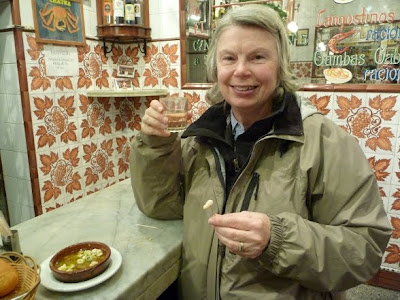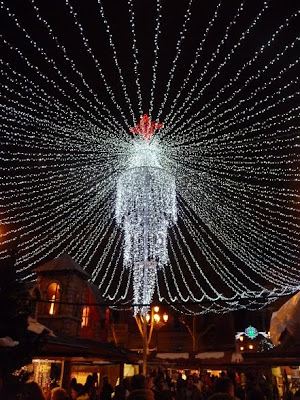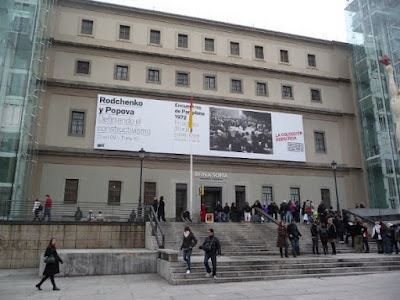The Prado, they say, is one of the world's four or five great museums, and, if you like painting only, and almost entirely Spanish and Italian, 15th-19th centuries, this is the place for you. Also just about every sort of depiction imaginable, to 15th-19th century Spanish and Italian painters and their patrons, of the annunciation, the adoration, the assumption, the conception, the ascent, the descent, the piety, the humiliation, the crucifixion, the many, many martydoms (not nearly enough, however), the judgements (last, next to last etc.), the spoliations, the preachings, the coronations, the visions, the epiphanies, the cardinal vices/virtues, the apotheoses, etc; you get the picture. For me, it might have been an atheological hell. And a lot of paintings of Spanish royalty, nobility, high clergy, etc., also high on my list of personal favorites. On the other hand, it is one of very, very few museums in which I have actually purchased a guidebook, just to make sure we didn't miss any of the 40 or so
supreme masterpieces (seriously) and have to come back. But I probably will want to go back some time. Figuring out the apparently Cabalistic numbering system of the rooms was a challenge in itself.
The Prado has a no pix policy and the will and manpower to enforce it. Frowny-faced guards everywhere. In a place like this, you don't dare. But they have a quite decent website which I have referenced below in the "not pictured" department.
 |
Current entrance
|
 |
Statue of Goya; it seemed like at least half the
paintings were his; despite being (or maybe
because...) the court painter, he had a darker
side, a really dark side, kept to himself, but
revealed in a very large and interesting hall,
all by itself...
|
 |
Older entrance
|























































